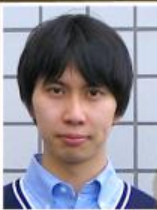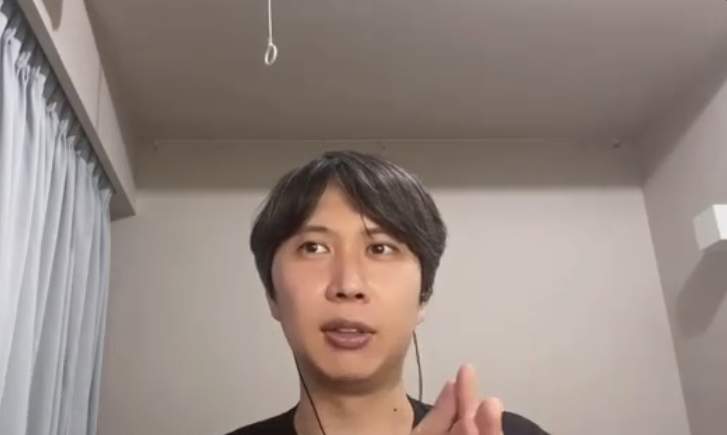Creators in BANDAI NAMCO Studios (BNS) work passionately to create games that everyone can enjoy. But what exactly is the source of their passion?
This series of articles will talk about how the creators at BNS apply things and experiences they like to game development.
This episode features Keigo Kuramochi, a sound creator from the Sound Unit of BNS’ Technology Studio, Creative Department. Through sound, he strives to relay character emotions to the player and complement players’ emotional experiences. We asked him what he thinks are important traits for him as a creator, and as a member of BNS.

Keigo Kuramochi, Sound CreatorAffiliation: BNS Technology Studio, Creative Department, Sound Unit
―――Thank you for your time today. So what exactly do you do for work?
I’m part of a team that works on sound-related things for a number of the studio’s projects. Most of the time, I’m in charge of sound direction, asset creation (SFX and BGM), and implementation. I also instruct new hires when we do our onboarding.
The main bulk of my sound direction work involves deciding a sound concept for a particular title, securing budget, assigning talent, and managing the production schedule. My job also has me think about and suggest what audio needs to do in the game, as well as decide how to place particular sounds.
Implementation is where we place sounds in the various parts of the game according to some predetermined specification. An example would be to program something like “play this sound effect when the A button is pressed”.
Sometimes, sounds don’t play when they should. Finding the cause of and squashing bugs reported by debuggers (people who check the game for errors) is also a part of implementation.
―――I guess sound creators do more than just create nice-sounding audio
While we do create nice sounds for work, it’s also part of our jobs to think about the best way to have players hear the sound.
No matter how good something sounds, it will be half as enjoyable if its timing is off. It’s the sound creation team’s duty to be responsible for how/when the sound is played, tuning the volume, and making sure it’s heard the way it’s meant to be heard.
―――I can understand why timing is important, but why volume?
Volume is actually really important.
A common example seen in anime is to lower the volume of BGM and SFX when a character is speaking to accentuate a dramatic scene, and the same effect is also used in games, where some sounds are prioritized to emphasize, in real time, specific parts of a scene.
―――It sounds like you have a hand in everything audio-related!
When an in-development project is trying to create a specific experience, we try to understand the background behind each part of the game and propose ways to embroider each experience through sound. This is a big part of any project and it is our goal to use sound to achieve the experiences that in-development projects want to make, as well as exceed any expectations they have.
―――Can you share a story that’s left a lasting impression on you?
 I still remember some of the development work I did for a VR experience at the VR ZONE facilities. The experience is called Hospital Escape Terror, and there’s a scary scene where the characters attack the various people in the game, and eventually attacks the player. The schedule was pretty tight for that scene, and you could hear that I felt a bit rushed from the sound effects I used for that scene, but I think the sound was actually improved as a result, haha.
I still remember some of the development work I did for a VR experience at the VR ZONE facilities. The experience is called Hospital Escape Terror, and there’s a scary scene where the characters attack the various people in the game, and eventually attacks the player. The schedule was pretty tight for that scene, and you could hear that I felt a bit rushed from the sound effects I used for that scene, but I think the sound was actually improved as a result, haha.
The normal development flow has sound added as the final step after the visuals have been completed. Since everything has a deadline, delays in sound implementation directly affect the delivery date. To give ourselves ample time to work, we keep tabs on the schedules of people before us on the pipeline, so that if there’s a delay, we can prepare in advance or consider some other options.
There were changes to the development schedule for Hospital Escape Terror right up to release, but we (barely) managed to get it done on time. I got to experience the importance of expecting that issues would occur and planning accordingly (laughs).
I also designed the sound to follow an emotional curve as a way to complement players’ emotional experiences, as well as give them a scare. Horror movies often use a type of scene where the protagonist enters a room, looks back as if something was there, only to find nothing, and right as the protagonist relaxes, a ghost appears. I tried to recreate this scare through sound, letting players calm down after a tense moment and then instantly surprising them. I think following an emotional curve was a good idea for sound design in this case.
I also put effort into the environmental sounds the players hear as they play. There are a number of sounds that people identify as “scary”, such as the sound of a crying baby, a knife scraping against a bottle, a fork dragged across glass, scraping across a chalkboard, electric drills, or an instrument called a waterphone, which is often used in horror movies. I mixed in these sounds when making the environmental sounds for the VR experience.
As a bit of trivia, the low audio frequency of 19 Hz is often referred to the “ghost frequency”. Although headphones usually can’t play back audio at this range, it’s in the data (laughs).
 Speaking of environmental sounds, Gundam VR Daiba Assault was another VR activity where I put a lot of thought into sound design. The activity features the Gundam statue in Odaiba, and the player gets to ride on the Gundam’s hand as it battles an attacking Zaku.
Speaking of environmental sounds, Gundam VR Daiba Assault was another VR activity where I put a lot of thought into sound design. The activity features the Gundam statue in Odaiba, and the player gets to ride on the Gundam’s hand as it battles an attacking Zaku.
The environmental sounds used when the player stands in front of the Gundam statue were recorded using a binaural microphone. Binaural microphones use two microphones to record sound as they would be heard by a human being. Sound recorded this way has great presence and feels really immersive when played back. In order to recreate the experience of standing in front of the Gundam statue in VR, we went to the actual statue in Odaiba and recorded the sound there using a binaural microphone for headphones.
If we recorded during the day, the sounds of people talking and walking around would get in the recording, so we chose to record at 4:00 a.m. Despite this, it was still difficult to eliminate all artificial noise: an airplane would pass by, or there would be someone dragging their suitcase along. It took quite some time to make the recordings with the number of retakes we had to do (laughs).
Of course, we also make sounds using sound libraries we have on hand, but depending on the product concept or sounds that we think should be recorded properly, we try to record on location even if it involves more work. We tried to add value to the game’s content and it felt like what we tried to do was a good match for the game’s concept.
―――Changing the topic, do you have any personal rules that you stand by when working?
I guess one would be checking and clarifying the goals of a task before working on it. I think it’s important to be mindful of why a task is needed, what the task enables, and what issues it solves when working on something.
Instead of just doing what I’m told, I make sure that the task needs to be done, and if there’s a better method or solution for it.
I think a lot will change just by knowing what the goal of a task is. You’ll start thinking about the impact of the work you’ve done.
You’ll also start caring about what you can do to increase the quality of your output as a team, as well as individually.

―――I see. So is there anything you do specifically to increase the quality of your team’s output?
I try to understand what my colleagues are thinking before I start working on something. In Japanese, the origin of the word “to work” is apparently “to lessen the load of others”. So I think it’s important to prioritize things that will help out those you’re working with.
Another thing I try to do is be someone who people want to work with. It’s really important to make a good product. Everyone works towards the goal of making a good product, but everyone has a different standard of what is “good”.
Instead of being too adamant on what I want to make, it’s also important to understand what the project or team is working towards and focus on making that a reality.
Then, when you have a firm grasp of what it is the project wants to achieve, a time will come when someone asks for your opinion on something. “What do you want to do?”
To tell you the truth, there was a period in time when I was bothered that nobody really listened to my opinions. My manager’s advice at the time was to start by making sure to methodically meet other people’s expectations. When I focused on that, people eventually started asking for my opinion, and people started listening to my opinion more often. This experience made me realize that it was important to start by gaining the trust of others.
――――To wrap up, could you tell us one of your guiding principles?
I wouldn’t call it a “guiding principle”, but I’ve come to always “start by meeting other people’s expectations” like I just talked about. I’ve come to make these words my own, and by applying it to my work every day, I started to understand more of the concept and it has now become a default work mindset for me.
But when I say “meeting other’s expectations”, I don’t mean “be passive and just do as you’re told”. You should trust people, understand the goal, and do your best to make it real, or to propose something even better as an extension to what the person wants. You need to take a very proactive stance.
We can improve the quality of the work done in BNS by trusting others around us. And by doing good work, BNS will in turn gain the trust of its users. I would like to contribute what little I can to this process.
――――Thank you!




